Recent Articles
Popular Makes
Body Types
10 Things You Need to Know About the 2017 Dodge Challenger
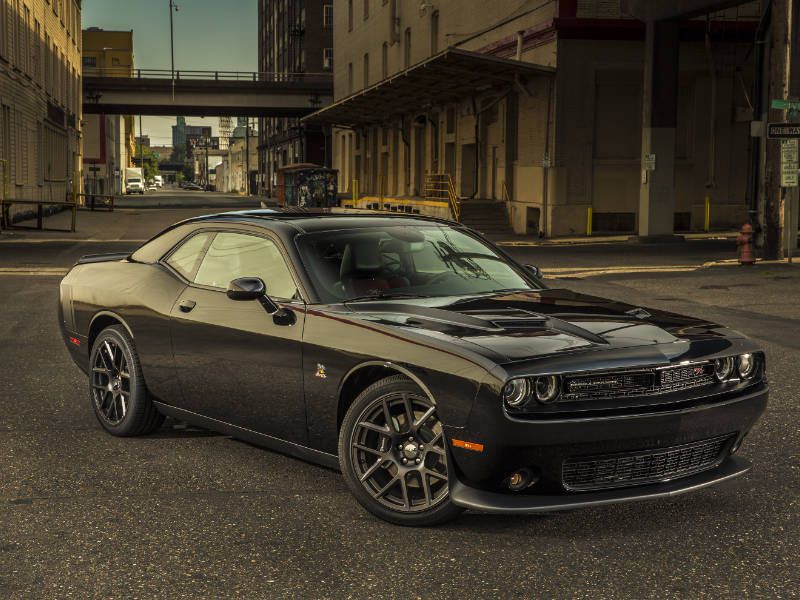
2016 Dodge Challenger SXT Parked 3 4 Front ・ Photo by Dodge
The 2017 Dodge Challenger is one of the most recognizable muscle cars on the market today, and a potent competitor for the Ford Mustang and Chevrolet Camaro. Here are ten things you need to know about it.
1) The Challenger may be the best retro-muscle car ever made.
When the Challenger first made its re-appearance in 2008, the automotive world was floored. Enthusiasts loved its resemblance to the original Challenger, which Dodge first introduced in 1970 (the sunset of the muscle car era) as a challenger (get it?) to the Mustang and Camaro. Dodge only built the original Challenger until 1974, but it remained one of the most memorable of Chrysler’s legendary muscle cars. The modern-day Challenger has been updated — the newest version is designed to resemble the ’71 Challenger — but the resemblance is still uncanny, and a pretty neat trick considering all the safety standards modern cars have to meet that the original Challenger didn’t.
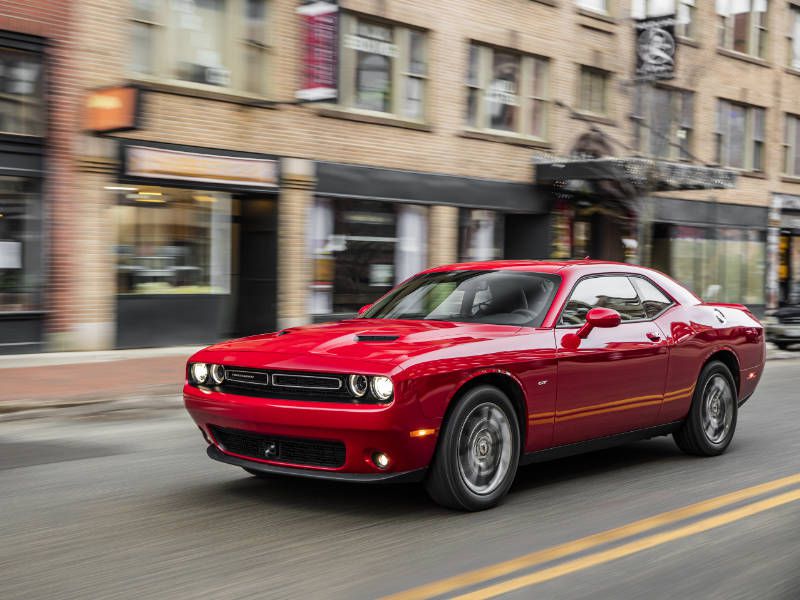
Photo by Dodge
2) The Challenger has some serious muscle-car power.
If you want muscle-car power, the Challenger can deliver. Dodge offers a cadre of monster V8 engines, starting with a 5.7-liter V8 that delivers 375 hp and 410 lb-ft of torque. To put that in perspective, the entry-level V8 on high-performance versions of the ’70 Challenger was a 5.6 liter (340 cid) V8 that produced 275 hp and 340 lb-ft of torque. Next up is a 6.4-liter V8 that produces 485 hp and 475 lb-ft of torque. At the top of the lineup is a supercharged 6.2 — the vaunted Hellcat engine — that puts out an unbelievable 707 hp and 650 lb-ft of torque. The Hellcat makes the original Challenger’s most potent engine, the 7.0-liter 426 Hemi, seems a bit tame at 425 hp and 390 lb-ft of torque. These engines deliver all the sound and fury of an old-school muscle car V8, but they won’t overheat when you get stuck in traffic.
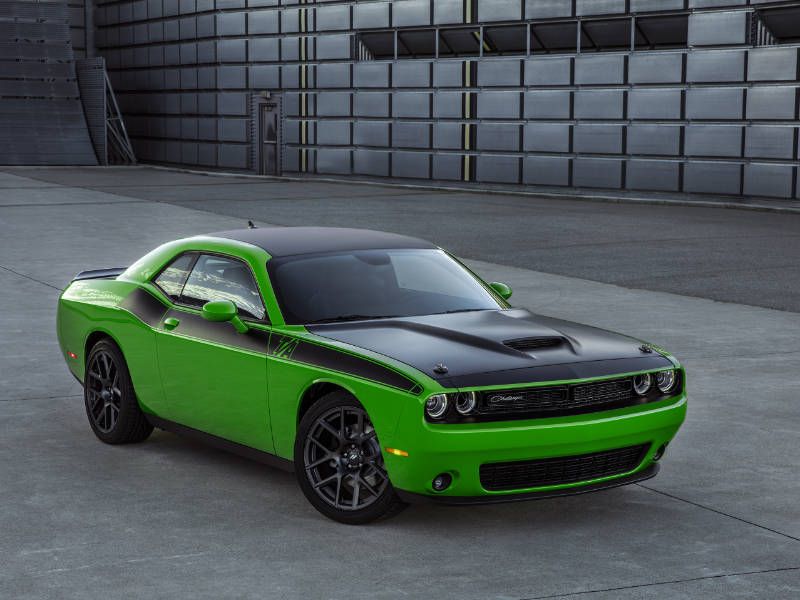
Photo by Dodge
4) But it also has a more reasonable engine choice.
The base engine in the Challenger is a 3.6-liter Pentastar V6 that gets surprisingly good fuel economy. And no, it’s not slow: It delivers 305 hp, more than twice the output of the original Challenger’s entry-level 3.7-liter Slant Six. In fact, the new Challenger’s six delivers more horsepower than three of the original Challenger’s V8s: The 5.2 liter (318 ci) delivered 230 hp; the 5.6 (340) put out 275 hp, and the two-barrel 6.3 (383) put out 290 hp — and these figures would be significantly lowered if measured using modern-day methods. The only thing the V6 lacks is the cool rumble of the V8 engines.
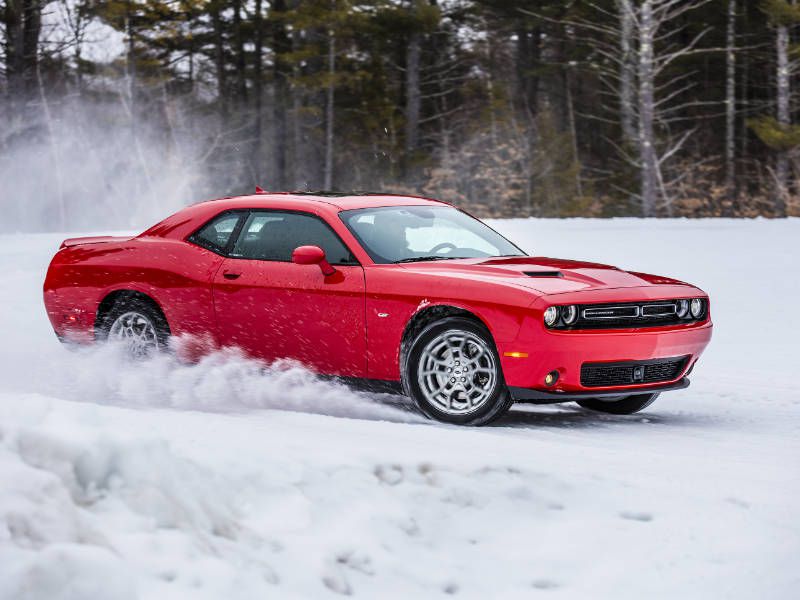
Photo by Dodge
4) Want to row your own gears? The Challenger will let you.
All of the Challenger’s V8 engines can be had with a 6-speed manual transmission. The V6 is automatic-only. If you’re looking for the 1960s muscle car experience, this is the transmission you’ll want — with its heavy clutch and direct linkage, driving it feels a lot like jamming the gears on an original Challenger. Unfortunately, Chrysler has dumped the pistol-grip shifter, a feature of the original Challenger that was reproduced on 2008-2014 Challengers.
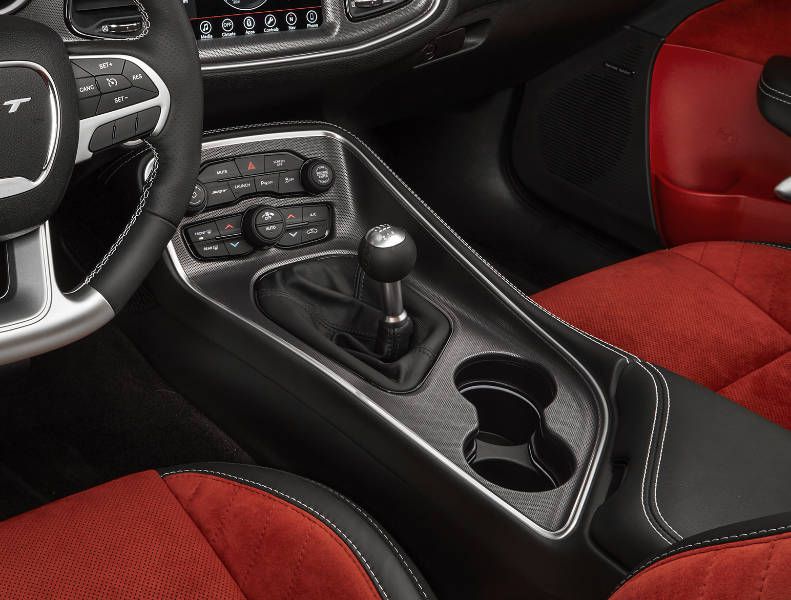
Photo by Dodge
5) Live where it snows? The Challenger has you covered.
Since its introduction, the Challenger has been a summer-only car for folks who live where it snows. Not anymore: Dodge now offers an all-wheel-drive version called the Challenger GT. It uses the same AWD system found in the Charger, which disconnects the front drive axle when it’s not needed in order to save fuel. The AWD system is offered exclusively with the V6 and an automatic transmission, which is a bit of a bummer; we’d love to see it adopted to the V8. But you won’t hear us complaining too much: All-wheel-drive turns the Challenger into a true four-season muscle car.
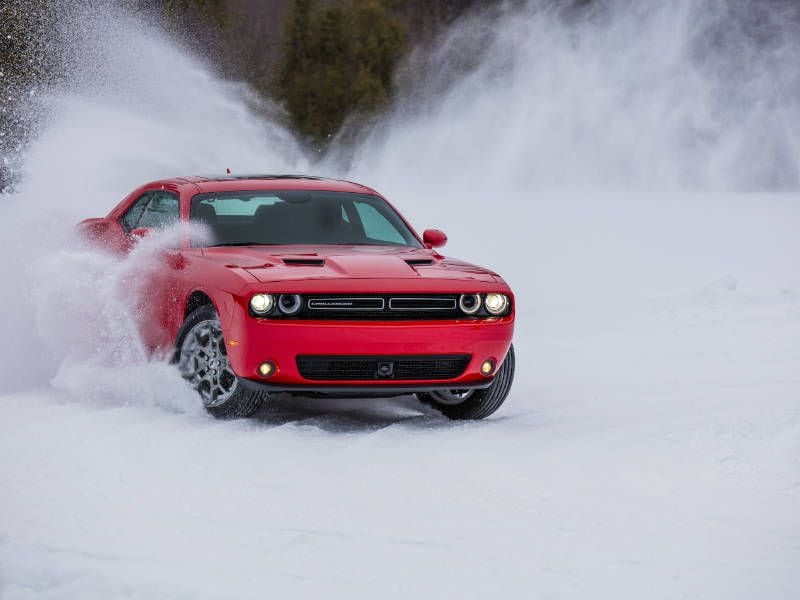
Photo by Dodge
6) The Challenger is a proper track car.
Old-school muscle cars have good straight-line speed, but taking a corner quickly can be downright scary (if not out-and-out fatal). Not the new Challenger: It’s good in the curves as well, especially if you opt for the Super Track Pak, which includes a sport-tuned suspension and grippier tires. We’ve driven the Challenger on the track, and it’s very talented, though the Ford Mustang and the Chevrolet Camaro feel lighter and more agile; by comparison, driving the Challenger fast feels a bit like swinging a sledgehammer. But one can swing a sledgehammer very quickly. We’re just sayin’.
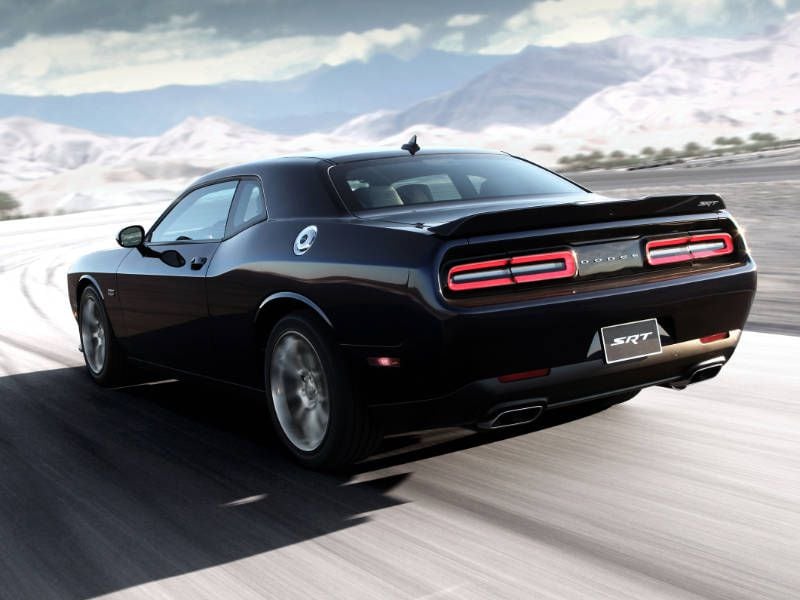
Photo by Dodge
7) Dodge has brought back all the old-school muscle-car colors.
Back in 1970, the Challenger’s color palette seemed like it was invented by someone on an LSD trip: TorRed, Lime Go Green, and our favorite, a shade of orange called Go Mango (get it? “Go, man, go!”) Today, all those eye-catching colors are back on the modern-day Challenger, along with some new additions: Yellow Jacket, Octane Red, Maximum Steel, and a color with a name that best sums up the Challenger’s bruising personality: Contusion Blue.
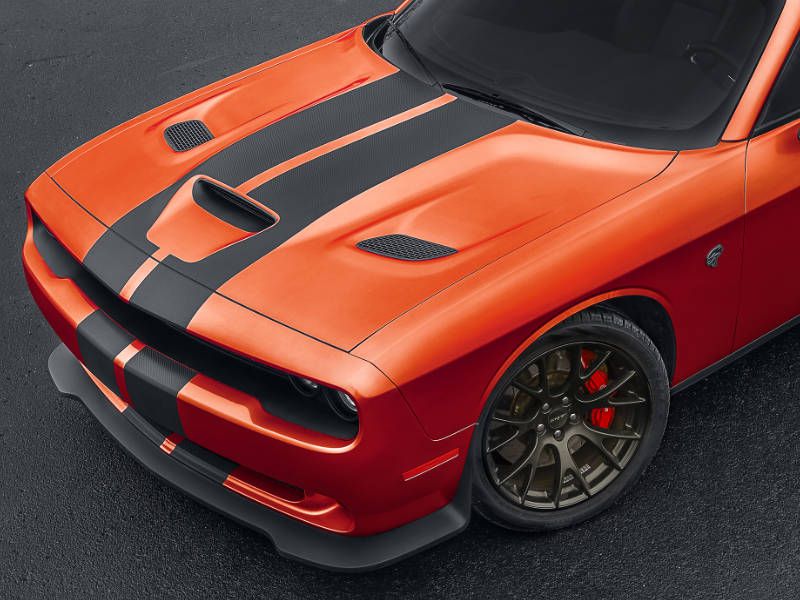
Photo by Dodge
8) The Challenger is nicer to live with than you might think.
When the modern-day Challenger came out in 2008, we loved the concept but loathed the interior. But Dodge has made huge improvements since: The updated interior looks good, with high-quality materials and Chrysler’s outstanding UConnect touch-screen stereo. Not that all is perfect: The back seat is hard to get in and out of and the narrow windows make it a bit hard to see. The Challenger feels a lot wider than the Mustang and Camaro, making it a bit more difficult to drive, but overall the Challenger is a lot easier to live with than you might think.
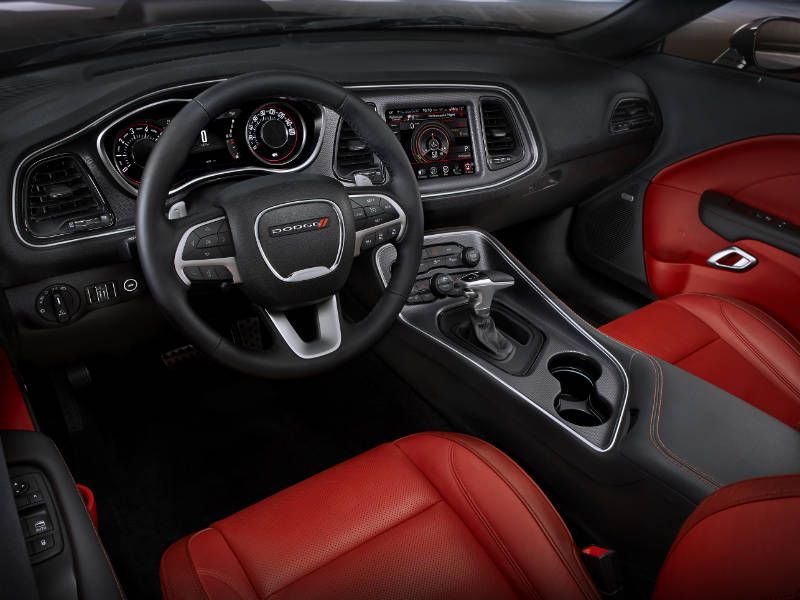
Photo by Dodge
9) Dodge offers a huge selection of Challengers.
The Challenger lineup is exceptionally broad, from the budget-priced SXT (yours for well under $30k) up to the fire-breathing SRT Hellcat. There are some 14 models in all, and we’re hard picked to recommend one as the best. The SXT Plus is nicely equipped and reasonably priced; the R/T provides that V8 rumble on a budget; and the SRT 392 delivers a modern-day version of that 1970s muscle car experience. And don’t forget the Shaker models, which bring back one of our favorite details of the original Challenger: An engine-mounted air cleaner that pokes up through a hole in the hood. As one of our favorite books about Chrysler muscle cars said, if the word “HEMI” on the scoop doesn’t intimidate the driver next to you, the fact that it’s moving independently of the rest of the car ought to.
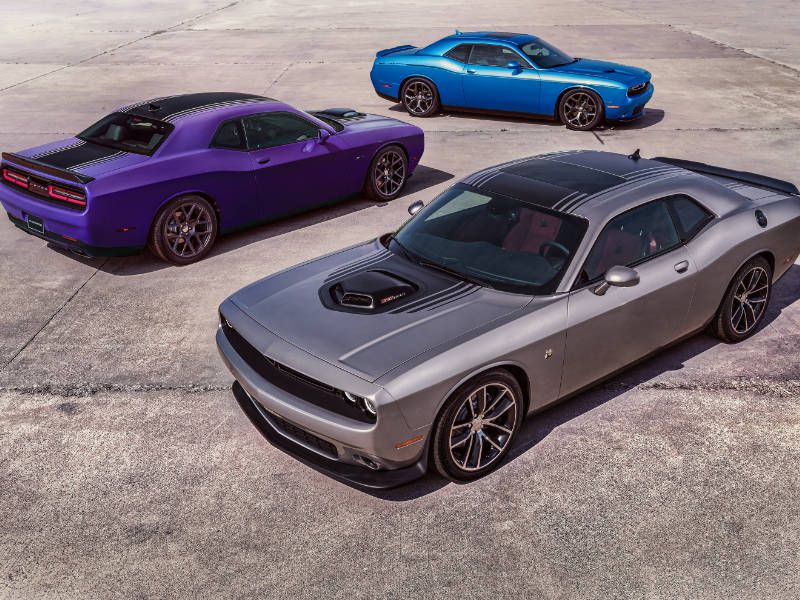
Photo by Dodge
10) There’s more to come.
Dodge has just announced the most fearsome Challenger yet: The 840-hp Challenger Demon, a street-legal drag racing car capable of going 0-60 in 2.3 seconds and running the quarter-mile in 9.65 seconds at 140 MPH — numbers that no muscle car could come close to reaching without serious modification. In fact, it’s so fast that the NHRA has already banned it for drag racing use; according to their rules, a car that quick is supposed to have a roll cage. Dodge will introduce the Demon for the 2018 model year, and production will be very limited — 3,000 cars in the United States and 300 more in Canada. The Challenger may be a serious muscle car, but the Challenger Demon is just insane.
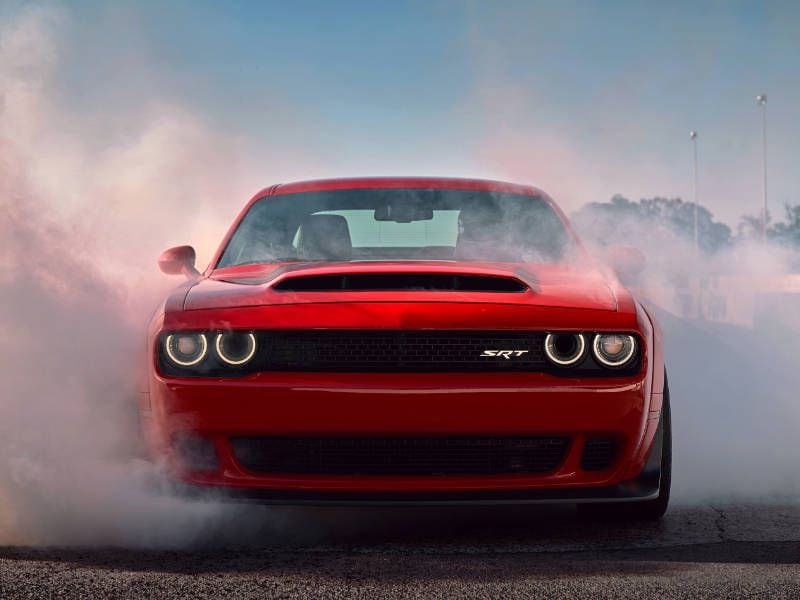
Photo by Dodge